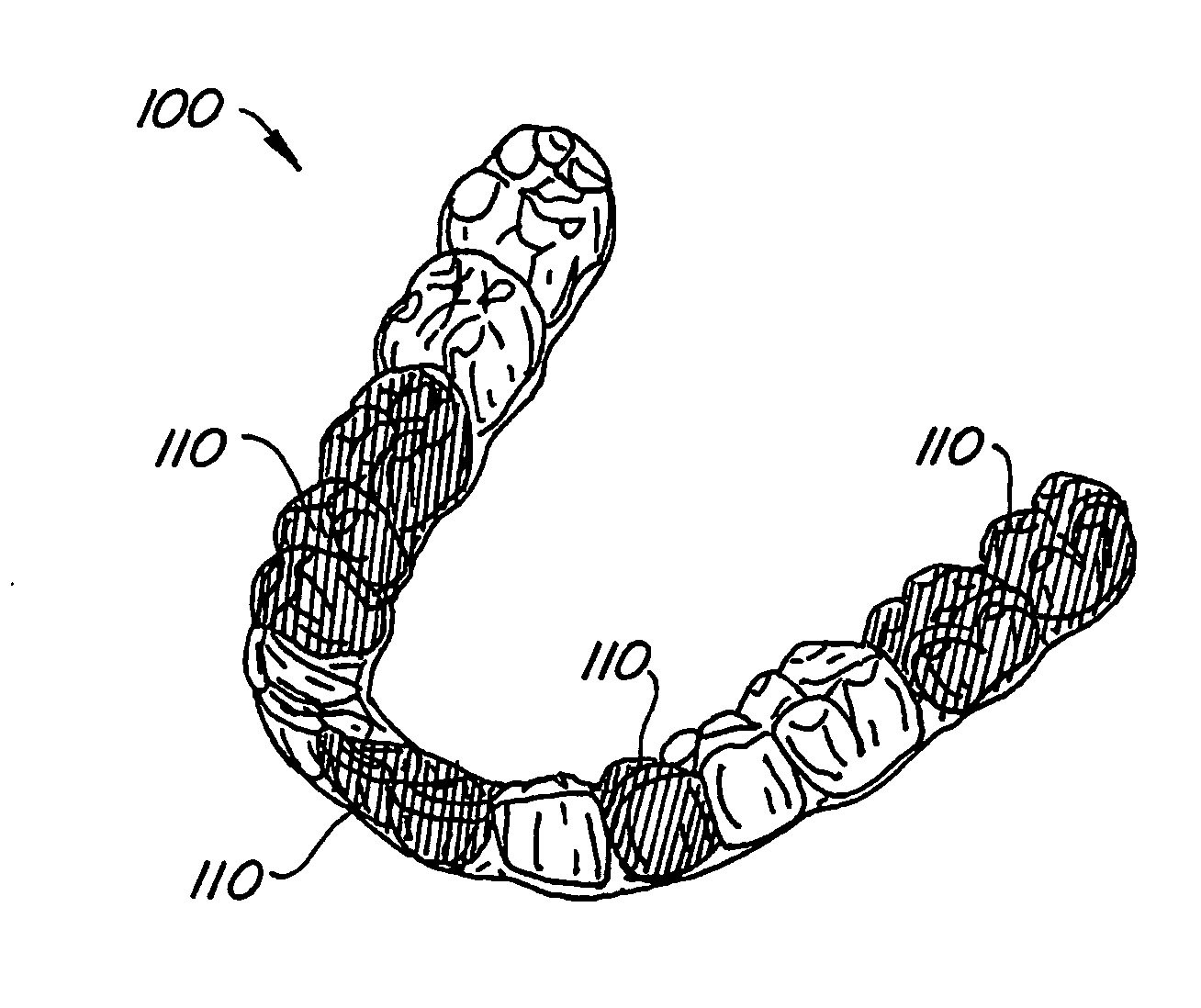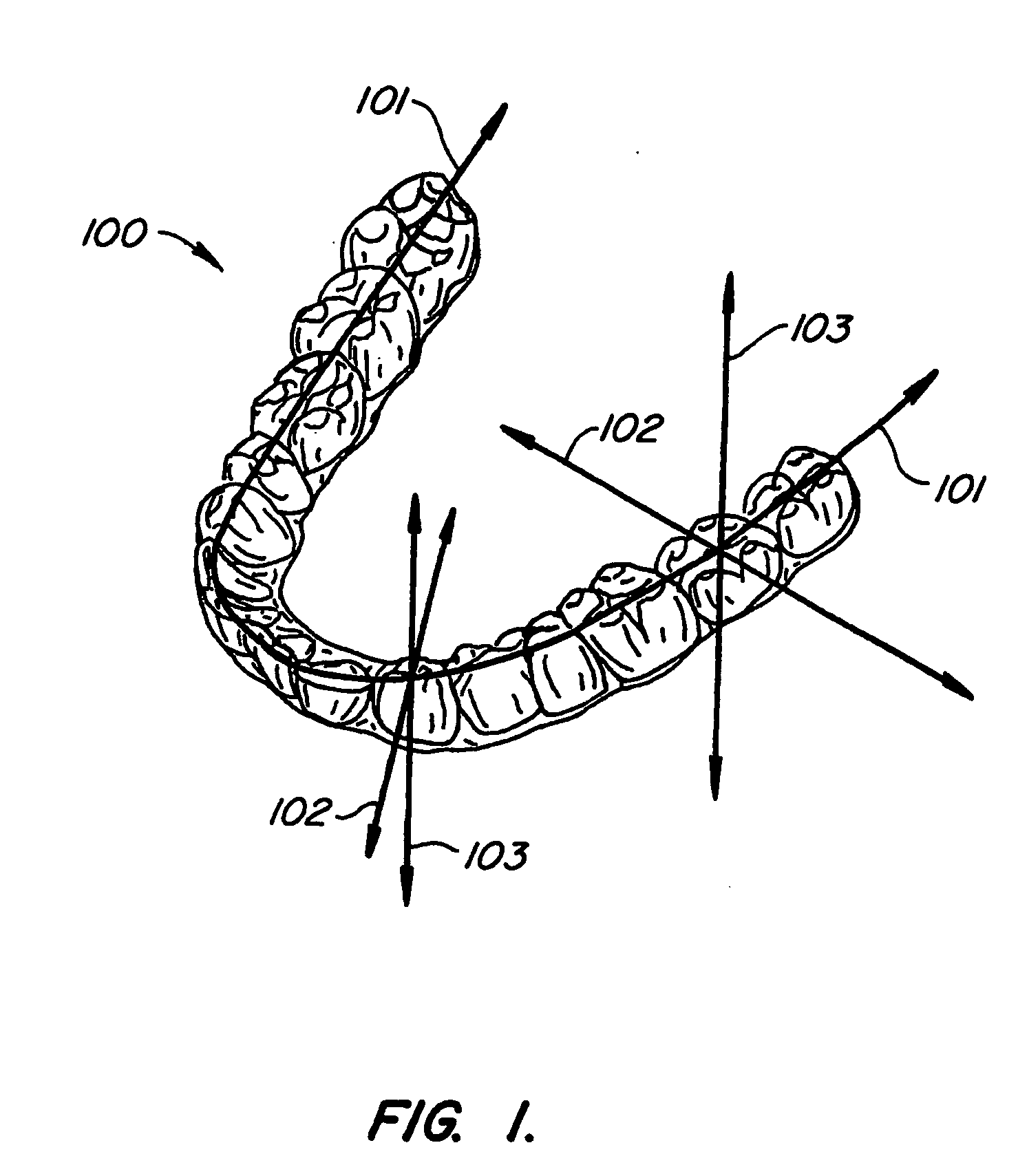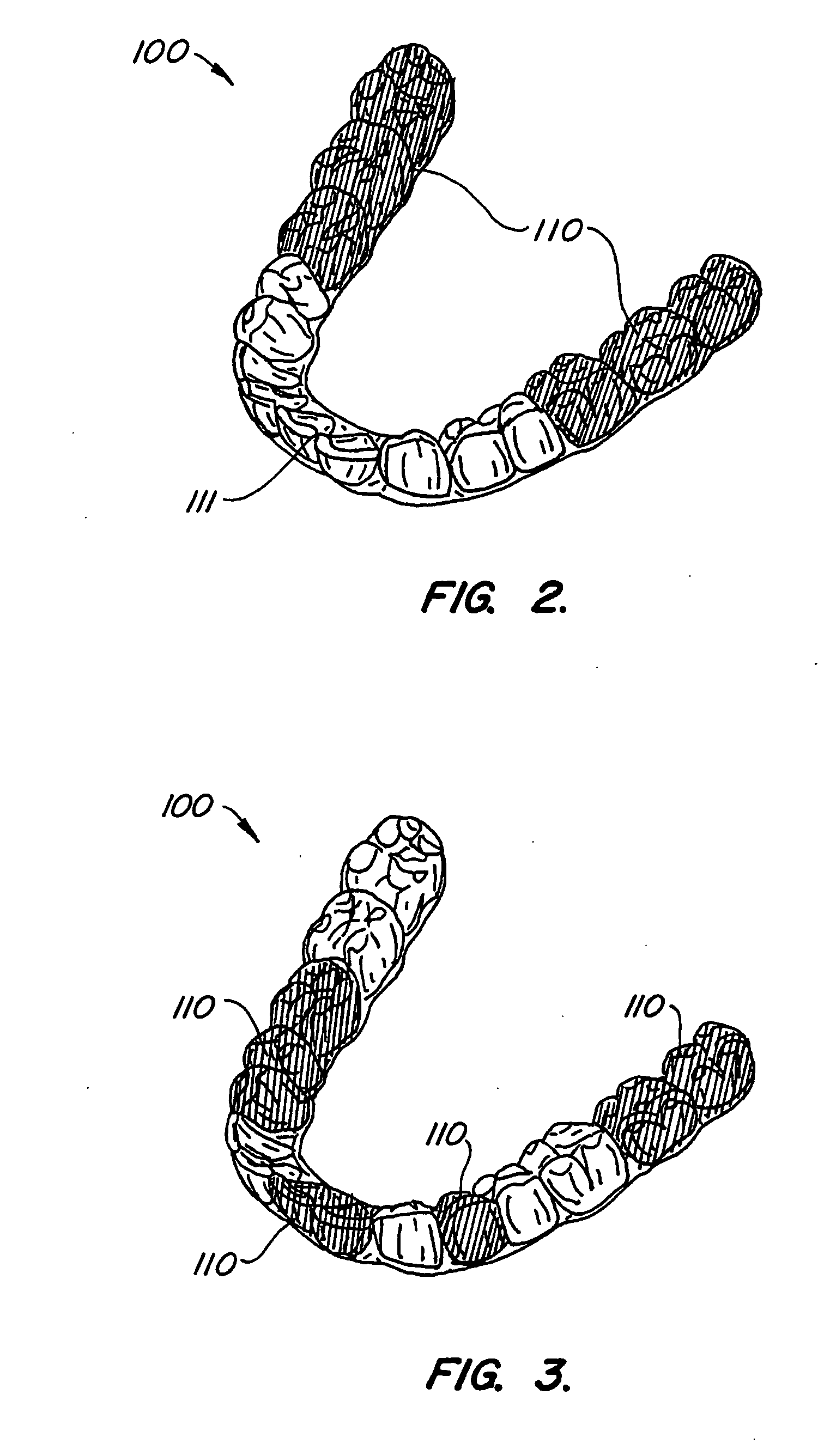Systems and methods for varying elastic modulus appliances
a technology of elastic modulus and elastic modulus, which is applied in the field of repositioning teeth, can solve the problems of patient compliance, material cost, manufacturing labor and treatment time, and limit the ease of use, and achieve the effect of lowering stiffness and high stiffness
- Summary
- Abstract
- Description
- Claims
- Application Information
AI Technical Summary
Benefits of technology
Problems solved by technology
Method used
Image
Examples
Embodiment Construction
[0041] The present invention provides improved devices, systems and methods for incrementally repositioning teeth using a plurality of discrete polymeric appliances of variable flexibility, where each appliance successively repositions one or more of the patient's teeth by relatively small amounts. Flexibility may be defined by elastic modulus of the polymeric material and may vary within a given appliance or may vary throughout a series of appliances according to a prescribed orthodontic treatment plan.
[0042] Referring to FIG. 1, portions of an elastic repositioning appliance 100 may vary in elastic modulus along a mesial-distal axis 101, facial-lingual axis 102, gingival-crown axis 103, or any axis in-between these representative axes. As previously described, a mesial-distal axis may be described as an axis following the gingival line or dental arch, a facial-lingual axis may be described as an axis following a radial or similar line from the tongue area toward the lip or cheek ...
PUM
| Property | Measurement | Unit |
|---|---|---|
| elastic modulus | aaaaa | aaaaa |
| modulus of elasticity | aaaaa | aaaaa |
| forces | aaaaa | aaaaa |
Abstract
Description
Claims
Application Information
 Login to View More
Login to View More - R&D
- Intellectual Property
- Life Sciences
- Materials
- Tech Scout
- Unparalleled Data Quality
- Higher Quality Content
- 60% Fewer Hallucinations
Browse by: Latest US Patents, China's latest patents, Technical Efficacy Thesaurus, Application Domain, Technology Topic, Popular Technical Reports.
© 2025 PatSnap. All rights reserved.Legal|Privacy policy|Modern Slavery Act Transparency Statement|Sitemap|About US| Contact US: help@patsnap.com



